If you’re travelling in India, the ancient city of Hampi should be high on your list. This UNESCO World Heritage Site in Karnataka is one of India’s most iconic sites. It’s treasure trove of temples, statues and ruins tells the story of the Vijayanagara Empire. I spent two days visiting this impressive place, as part of my solo trip to Goa. Here’s my guide to the ultimate Hampi itinerary for 2 days, including where to stay and how to see all the best sites.
This post may contain affiliate links. If you make a purchase, I receive a commission at no extra cost to you. As an Amazon Associate I earn from qualifying purchases. For more information, read my disclaimer.
Quick overview of your Hampi 2-day itinerary
- Day 1: Private vehicle tour of the ancient temples
- Day 2: Scenic walking or cycling and sunset mountainside views
First, let’s organise your accommodation in Hampi.
Where to stay in Hampi
One of the most popular homestays in Hampi is Gopi Guest House, which has a rooftop restaurant overlooking the temples and the river. Alternatively, try the excellent Ranjana Guesthouse. The Mango Tree Homestay is another fabulous option – the perfect place for relaxing after a day of exploring Hampi.
If you’re looking for more luxury, check out the wonderful Evolve Back Hampi. With a spa centre, hot tub and inspiring architecture, it’s 2.5 miles from the UNESCO World Heritage Site.
Explore the map below to find the best accommodation deals in Hampi for your dates:
How to plan your Hampi itinerary for 2 days
With two days in Hampi, you can explore its rich history, marvel at its ancient architecture and enjoy the serene landscapes. However, with so much to see and do, planning your time in Hampi is essential to make the most of your visit.
This 2-day Hampi itinerary is designed to help you explore the city’s highlights, including its magnificent temples and intriguing ruins among the impressive natural landscape.
Day 1: Discover Hampi’s historical wonders
Morning: Virupaksha Temple
Begin your Hampi adventure at Virupaksha Temple, the city’s spiritual heart.
This 7th century landmark is one of the first things you’ll see. It’s one of the most visible places to visit in Hampi as it’s 50 metres tall with intricate designs.
From here you’ll be able to find plenty of people offering rikshaw tours of Hampi’s ancient sites. Be sure to negotiate to get the best price.
Join a full day tour of Hampi by car with lunch to see all these sites in comfort with expert commentary.
Mid-Morning: Kadelakalu Ganesha
A short rickshaw ride brings you to Kadelakalu Ganesha. This ornate structure houses an enormous statue of the multi-limbed, elephant-headed Lord Ganesha.
This Hindu god is revered as the remover of obstacles. He is also known as the patron of arts and sciences, the god of intellect and wisdom, and the Lord of new beginnings.
Book a two-hour tour of all the sights in Hampi here.
Late Morning: Lakshmi-Narasimha
Visit Lakshmi-Narasimha, a striking sculpture carved in 1528 from a single boulder of granite. Standing at 6.7 metres tall, it is one of Hampi’s most important monuments.
According to Hindu mythology, Narasimha, an incarnation of Lord Vishnu, has the face of a lion and the body of a human. Originally, a figure of Goddess Lakshmi sat in Narasimha’s lap, but it was removed during a raid in 1565.
My rickshaw driver explained the history of how this monument survived the empire’s fall, which really brought it to life for me.
Afternoon: The Royal Enclosure
The Royal Enclosure was the heart of the Vijayanagara Empire, featuring palaces and pavilions that showcase the empire’s architectural brilliance. Walking through feels like stepping back in time.
Here, I found this cute statue at the Mahanavami Dibba, or Great Platform, a beautiful stone platform. Built during the Vijayanagara Empire, it served as a stage for royal ceremonies and festivals, including the Navaratri celebrations. Its sides are adorned with intricate carvings depicting hunting scenes, processions and court life, while at the top you have panoramic views of the surrounding ruins.
The pretty pink-hued Lotus Mahal is another one of the essential places to visit in Hampi.
It is one of the few structures that survived the 1565 attacks. There is a small charge for foreign visitors but it’s well worth it.
Nearby, just outside the same enclosure, are the Elephant stables, which used to house the royal elephants of the Vijayanagara Empire.
Like the Lotus Mahal, there is a small fee to access this area. It’s incredible to imagine the elephants strolling in and out of this huge structure.
Late afternoon: Vitthala Temple and the Stone Chariot
End your day at the stunning Vitthala Temple, renowned for its intricate carvings and musical pillars. The intricacy of its architecture and design is unparalleled.
The temple has a musical secret. If you strike the temple’s pillars with your fingers, they make a twinkly melodic sound, each with a different note. The large temple complex contains structures including the shrine of the Goddess (Devi shrine) and the famous Stone Chariot.
The Stone Chariot is another shrine and one of three famous stone chariots in India. Originally, the wheels could turn.
Day 2: Explore Hampi’s scenic beauty and sunset bliss
Day two focuses on scenic exploration by bicycle or on foot and ends with stunning sunset views. I hired a bike from my guest house and had a fantastic day cycling around the area.
Morning: Walk or cycle through the ruins
Kick off your second day with a refreshing walk or cycle ride through Hampi’s scenic landscapes. You’ll go past green rice paddies, boulder-strewn trails and traditional villages.
This will take you to lesser-explored areas, where you can immerse yourself in the tranquility of the countryside. At one point, I had to stop because a herd of cows was blocking the road!
Along the way, you’ll discover smaller ruins and hidden gems.
Book your place on a guided walk of Hampi to learn the full story behind the ruins.
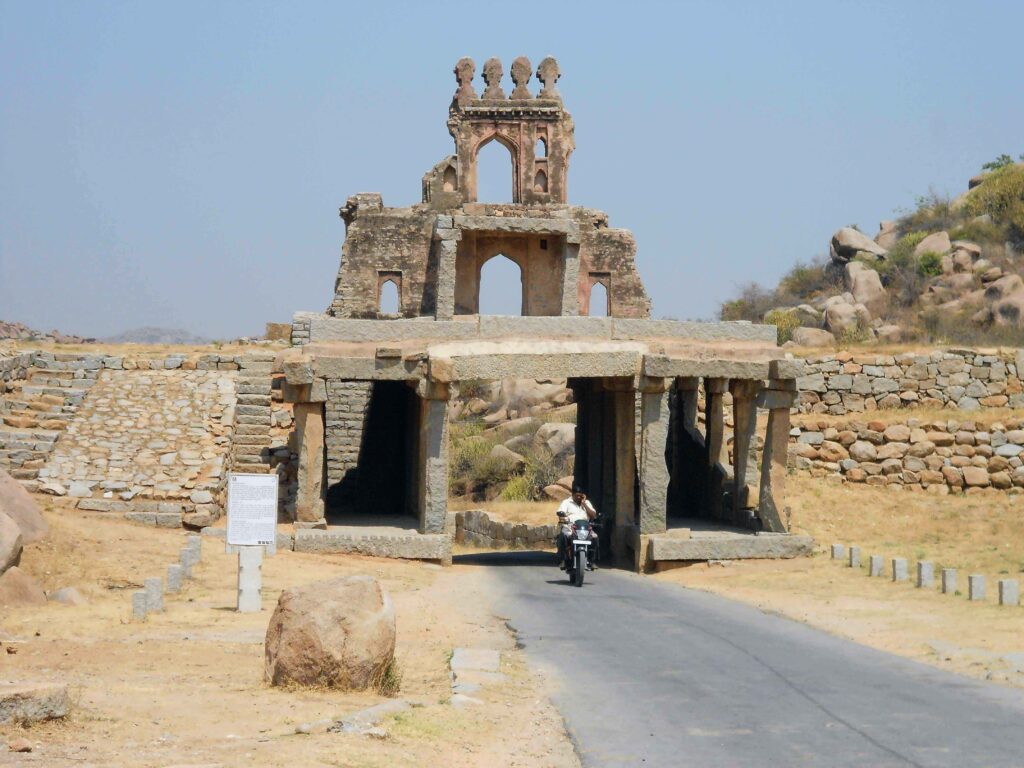
Afternoon: Relax and unwind
Take a well-deserved break in one of Hampi’s charming cafes near the Virupaksha Temple or Hampi Bazaar area. Use this time to recharge, enjoy some local dishes and soak in the ambiance of the town.

Evening: Sunset at Anjanadri Hill Temple
On your second evening in Hampi, make sure you visit the Anjanadri Hill Temple, otherwise known as the monkey temple.
This hilltop temple is dedicated to Lord Hanuman, a revered deity in Hindu mythology, who is depicted as a powerful monkey god.
Don’t be tempted to feed the monkeys in this temple. Keep your electronics hidden because, despite their cute faces, they won’t be afraid to jump on you if they see something they want!
After climbing the 575 steps to the top of the hill, you can enjoy incredible views over the area. It’s a great place to go at sunset in Hampi, as you can see the boulders, fields and Tungabhadra River below.
The landscape is bathed in the beautiful evening light, for the perfect ending to your 2 day Hampi itinerary.
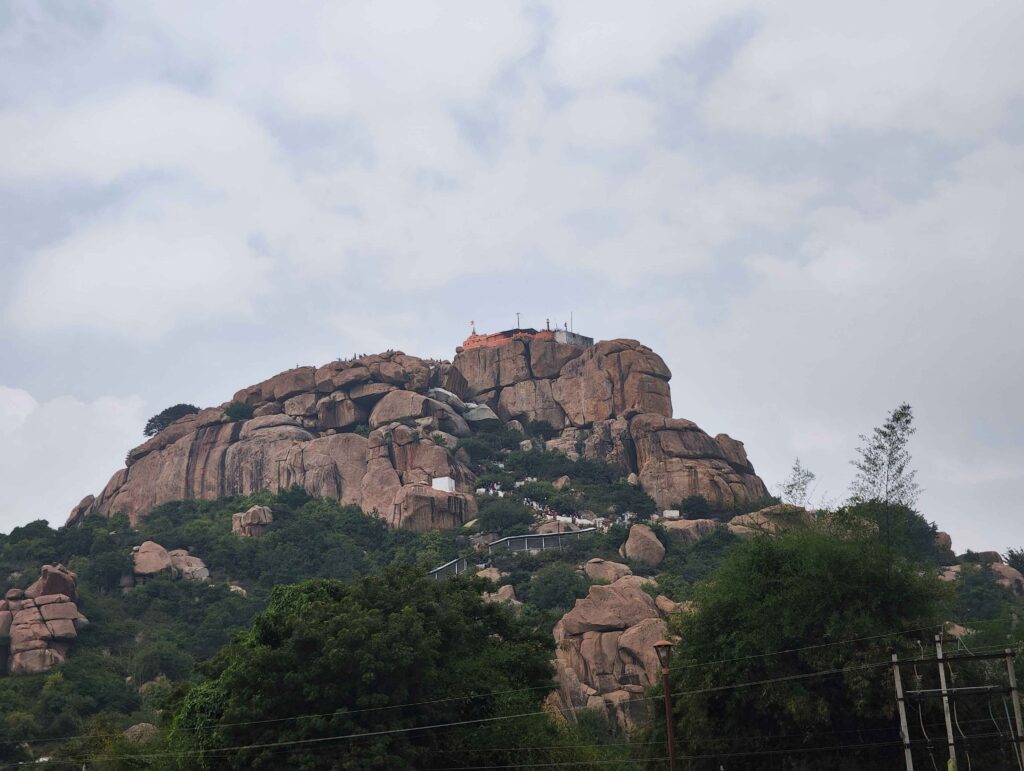
Day trips from Hampi
If you have an extra day or two in the area, there are some incredible archaeological sites within reach of Hampi that are absolutely worth exploring.
Badami, Aihole and Pattadakal
The popular Day trip from Hampi to Badami, Aihole and Pattadakal takes you to three sites showcasing different periods of ancient Indian architecture. Badami features stunning rock-cut cave temples carved into red sandstone cliffs, while Aihole is often called the ‘cradle of Hindu temple architecture’ with over 125 temples. Pattadakal completes the trio with its collection of 8th-century temples that beautifully blend North and South Indian architectural styles.
Anegundi
Just across the river from Hampi, the charming village of Anegundi offers a more traditional side of the region. You can cycle through rural landscapes, visit smaller temples, and experience authentic village life. It’s an easy half-day trip that provides a lovely contrast to Hampi’s archaeological sites.
Tungabhadra Dam
About 15km from Hampi, this impressive dam creates a scenic reservoir perfect for a relaxing afternoon. The surrounding gardens and viewpoints offer lovely sunset spots, and it’s a popular picnic destination for local families.
These day trips perfectly complement your Hampi experience, giving you a broader understanding of Karnataka’s incredible archaeological heritage and rural culture.
Book your place on the day trip to Badami, Aihole and Pattadakal here.
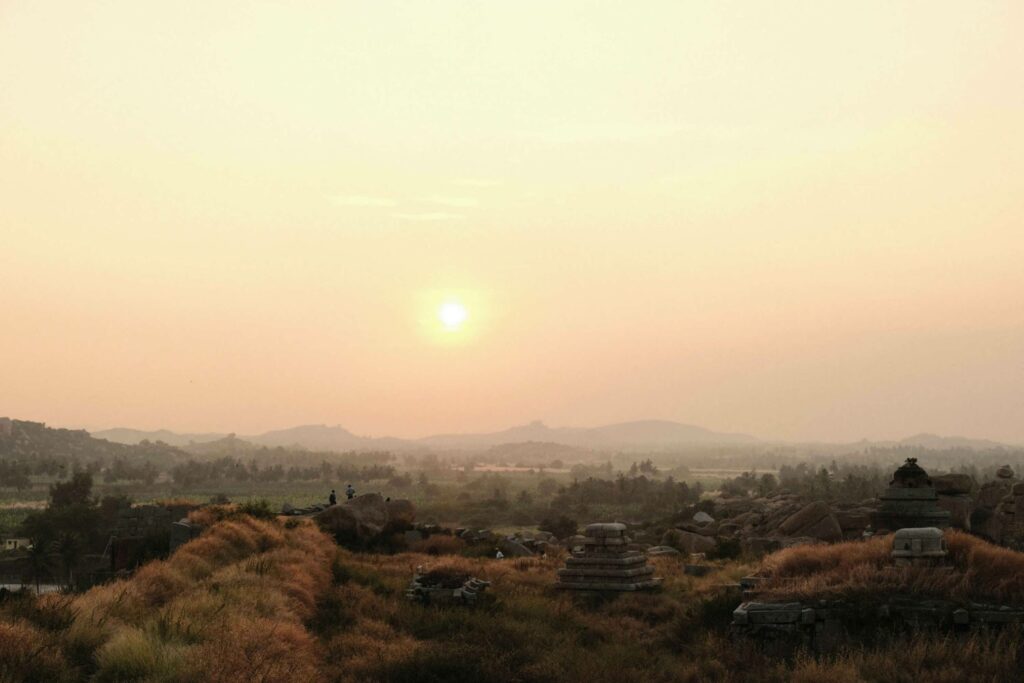
How to get around Hampi
On my two-day Hampi itinerary I tested out different ways to get around.
My first was a tour by rickshaw, then the next day I hired a bicycle to explore the city, which was great fun. Both options allow you to see all the sites in one day.
The photo below is the first view you get of Hampi from across the river on the road to the main bus stand. There’s a shuttle boat that carries people, as well as scooters and bikes, across the river so you can see the sites.
Where to eat in Hampi
From laid-back cafes to authentic local eateries, Hampi’s culinary scene has something for everyone.
1. Gopi Guesthouse Rooftop Restaurant
Located in the centre of Hampi, close to the Virupaksha Temple, this is a rooftop spot with panoramic views of the temples and the Tungabhadra River. This guesthouse restaurant is a traveller favorite thanks to its affordable meals with a view. Try its traditional South Indian dishes like dosa and idli.
Another great venue in the centre of Hampi is Funky Monkey. Known for its laid-back vibe and wide-ranging menu, it’s a great spot to meet fellow travellers. Try their burgers, pancakes and special chai.
3. Mango Tree Restaurant
This well-loved restaurant is a 10-15 minute drive from the centre of Hampi, in Kamalapur. One of Hampi’s most popular restaurants, it’s a peaceful venue set in a gorgeous garden, perfect for unwinding after exploring the ruins. Check out their South Indian thali, banana pancakes or their refreshing lassis.
4. Suresh Restaurant
On the New Hampi Road, about 10-15 minutes’ drive from the centre of Hampi, this budget-friendly eatery serves a mix of Indian and Italian dishes. Taste their masala dosa, pizza or homemade pasta.
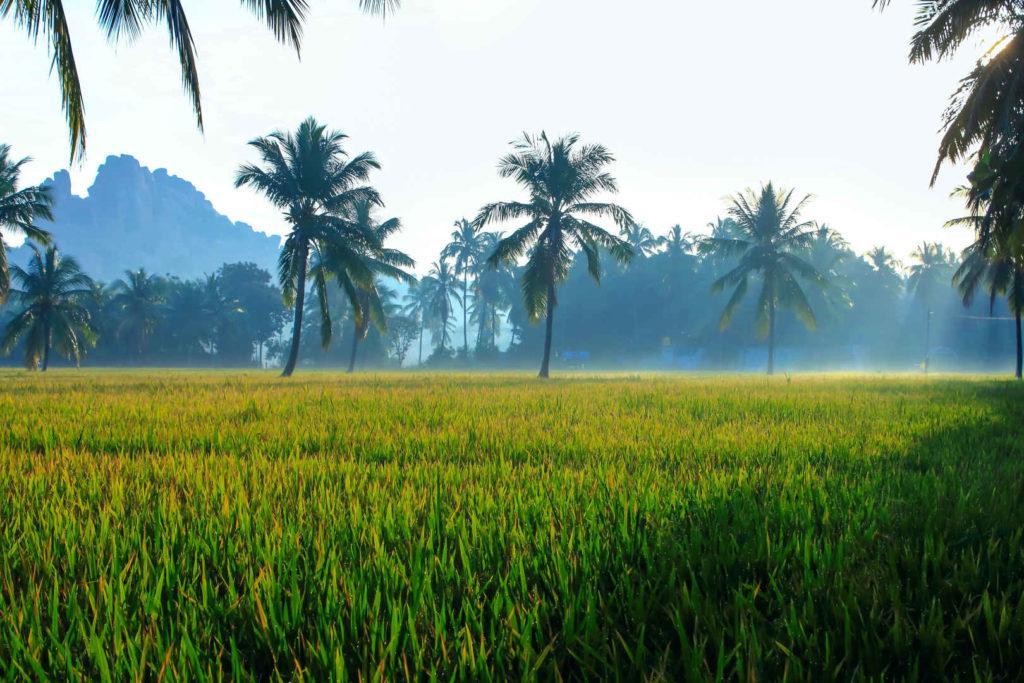
Is it worth going to Hampi?
I had never heard of Hampi before I visited Goa, but it was absolutely a highlight of my month in India. This UNESCO World Heritage Site was once the capital of the mighty Vijayanagara Empire and is now home to some of the finest examples of medieval Indian architecture.
The combination of stunning 14th-century temples, dramatic boulder landscapes, and fascinating history makes Hampi unlike anywhere else in the world.
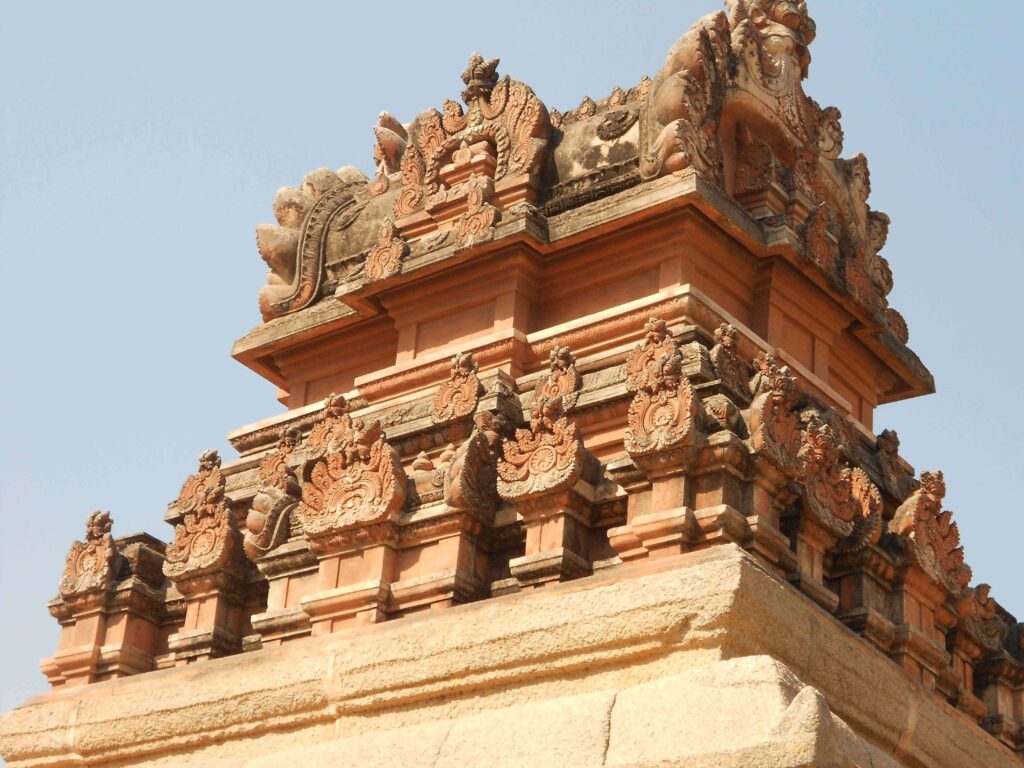
How to get to Hampi
Hampi is located in Karnataka, India and it’s slightly off the beaten path. I arrived via an overnight bus from Arambol in Goa, which was quite an adventure! Here’s how to reach this incredible UNESCO World Heritage site.
From Goa
The most common route from Goa is via overnight bus from cities like Panaji and Mapusa, taking approximately 7-8 hours. Bus operators include KSRTC and private companies like VRL and SRS. Alternatively, a two-day guided tour of Hampi from Goa eliminates the hassle of overnight buses and includes comfortable transport and accommodation.
From Bangalore
Overnight sleeper buses and day buses from Bangalore take about 7-9 hours and are well-connected. For train travel, catch the popular Hampi Express to Hosapete (Hospet Junction), about 13km from Hampi, then take a 30-minute rickshaw or local bus. Otherwise, a two-day guided tour of Hampi from Bangalore handles all transport and accommodation for a seamless experience.
From Hospet
If you’re arriving by train at Hospet Junction or staying in Hospet, it’s just 13km to Hampi. Local buses and rickshaws run regularly and take about 30 minutes. Many travellers use Hospet as a base as it has more accommodation options, though I recommend staying in Hampi itself to be closer to all the historical sites. However, the full day tour of Hampi from Hospet is great if you’re based there and want a convenient guide to all the sites.
Other options
The nearest airport is Hubli (160km away), a 3-hour taxi ride from Hampi. Buses from Hyderabad take 9-10 hours. Driving offers scenic routes with generally good roads and 6-8 hour journey times.
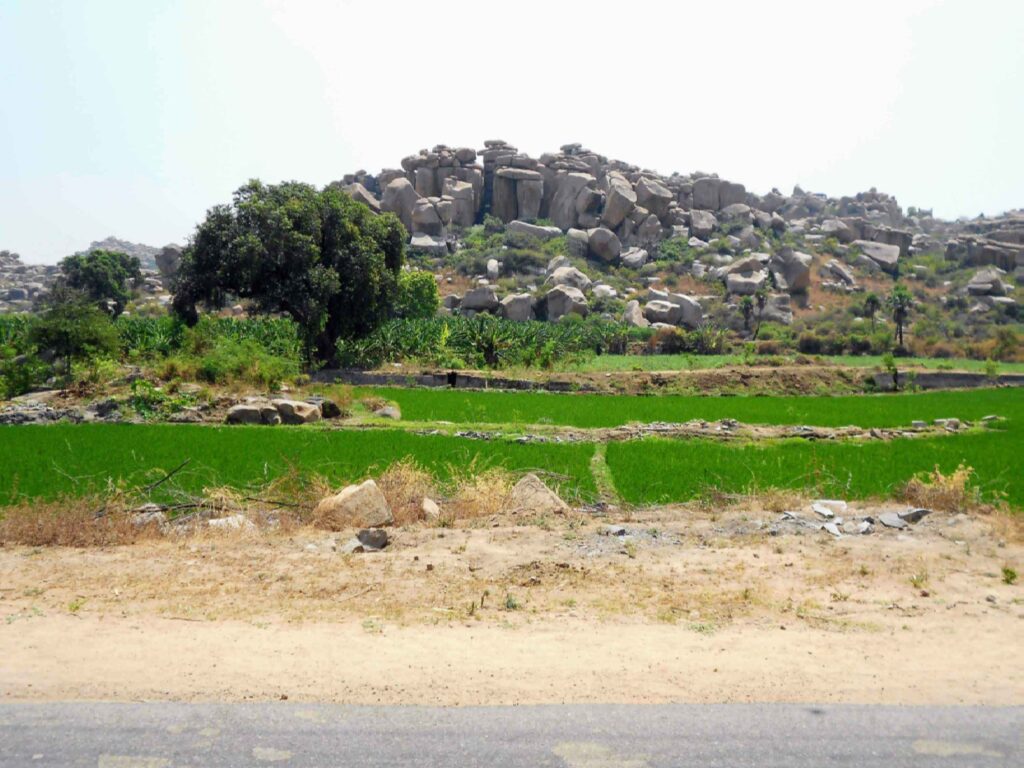
Frequently asked questions for a 2 day Hampi itinerary
Is 2 days sufficient for Hampi?
It’s the perfect amount of time. Day 1 covers the major temples and ruins, Day 2 allows leisurely cycling or walking and sunset views. One day feels rushed, but two days hits the sweet spot.
When is the best time to visit Hampi?
October to March is best for lovely weather (20-30°C) and minimal rain. December-February gets crowded, so October-November or March give you the best balance. Avoid April-September due to heat and monsoons.
How do I start a Hampi trip?
Book accommodation first, especially October-March when guesthouses fill up. Start at Virupaksha Temple in the morning when it’s cooler. Consider booking a guided walk of the area first to get your bearings.
Is Hampi costly?
No it’s actually very budget-friendly. ! I spent $24-36 for two days including accommodation, meals and bicycle hire. Even with guided tours, it’s excellent value and one of India’s most affordable UNESCO sites.
Do I need a guide in Hampi?
It’s not essential, but recommended for at least part of your visit. The stories behind the ruins are fascinating and you’ll miss details exploring solo. A guided walk is perfect for understanding the context.
What should I pack for Hampi?
Bring comfortable walking shoes, lightweight clothes covering shoulders/legs for temples, a sun hat, sunscreen, reusable water bottle and cash (most places don’t accept cards).
Final thoughts on a Hampi itinerary for 2 days
Even though I only spent a couple of days in Hampi, it was definitely a highlight of my month in Goa.
Afterwards, I took the bus via the Hospet bus stand and the Margao Bus Terminal to Palolem beach, where I continued my adventure. I discovered plenty of fun things to do in Palolem.
Exploring the ancient temples, ruins and statues, whether with a rickshaw guide or by bicycle, is so inspiring. Your 2 day Hampi itinerary is sure to leave you with a lifetime of memories.
Now, if you are a solo traveller, read my top tips for backpacking in Goa and all the best places to go.


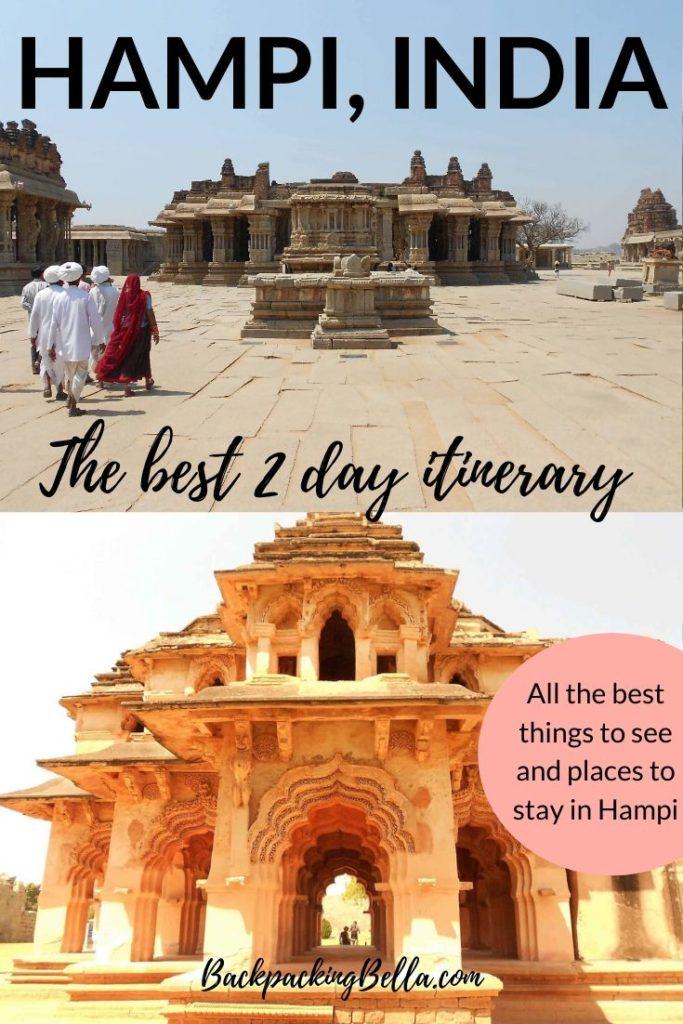
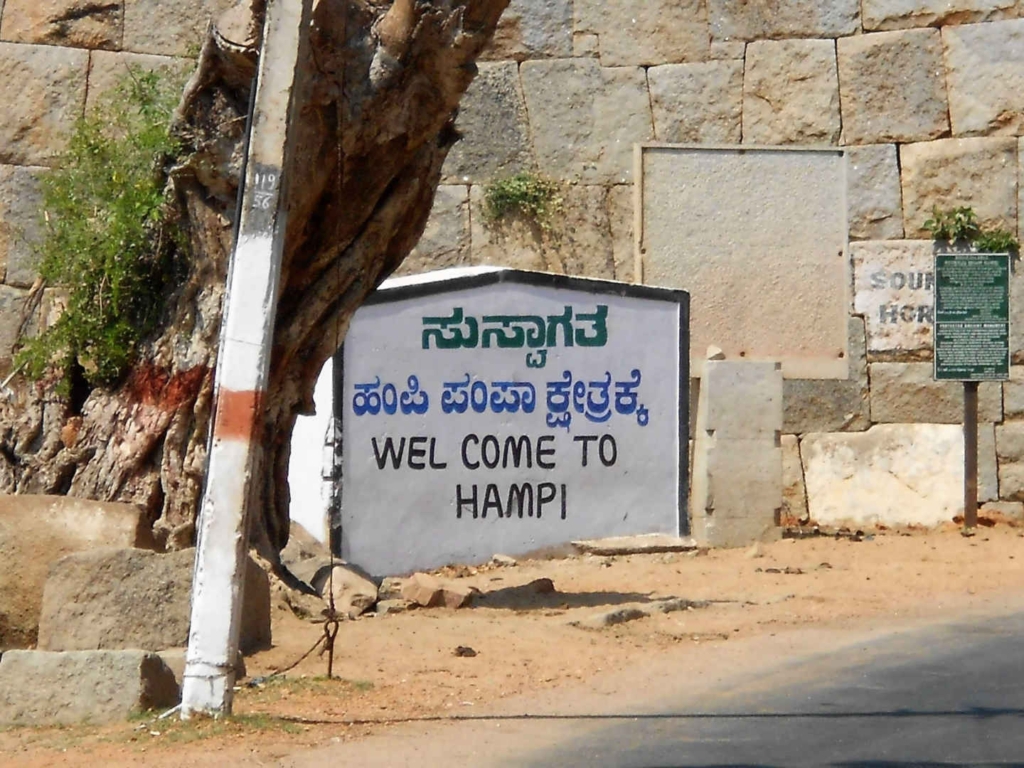
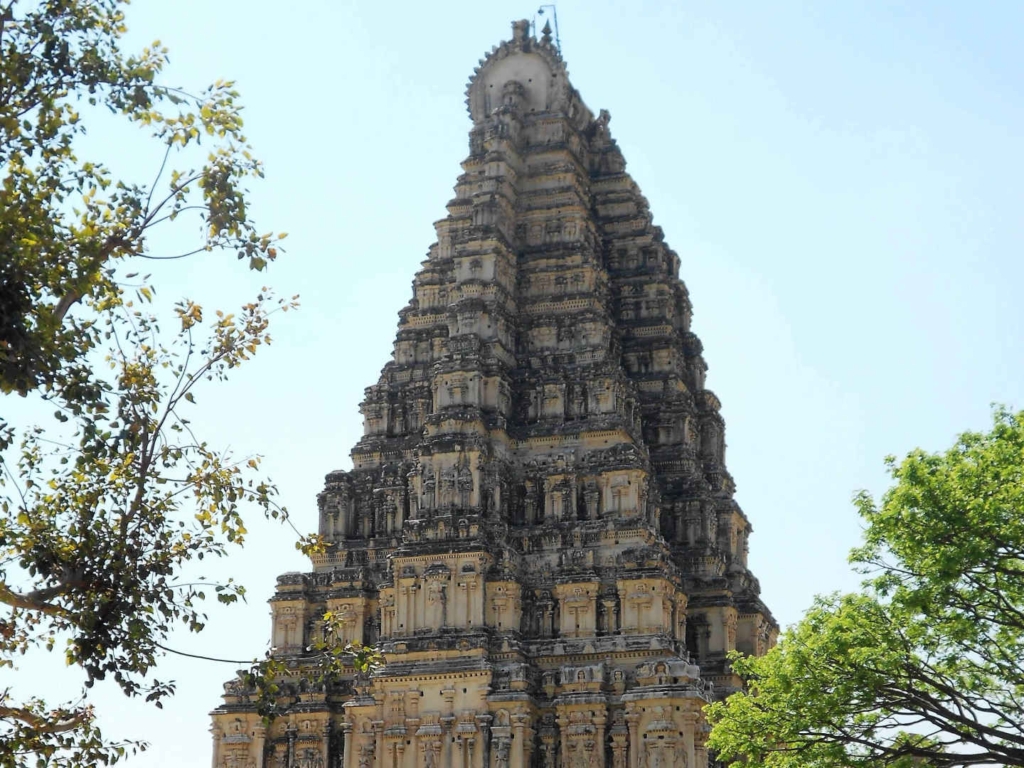
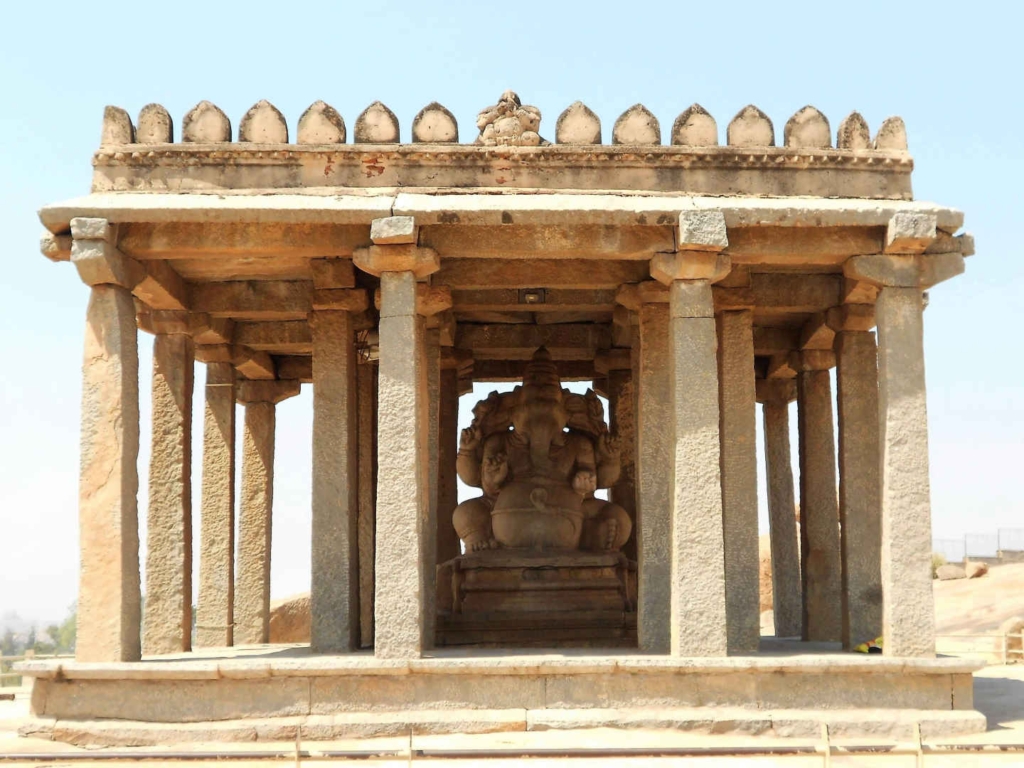
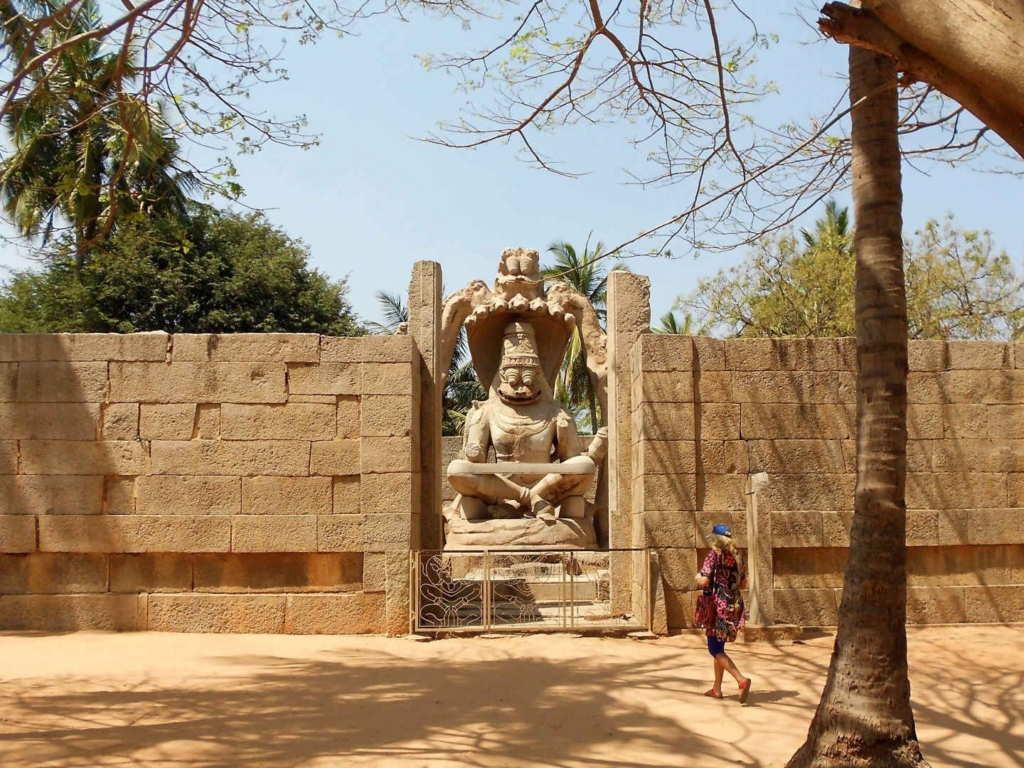
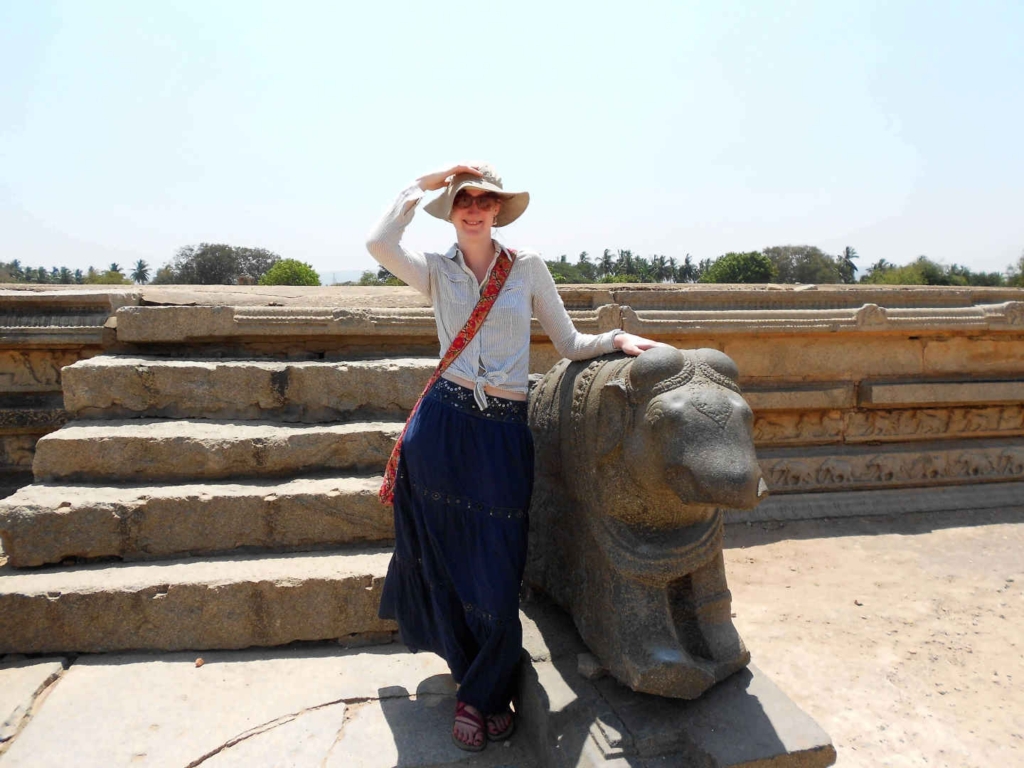
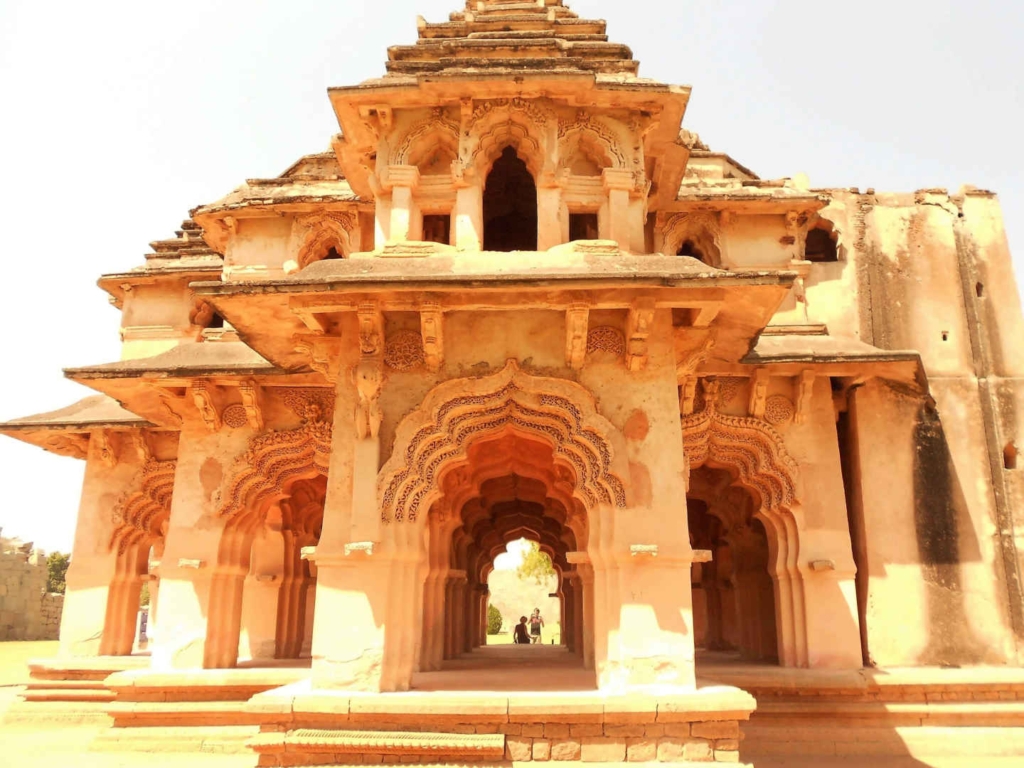
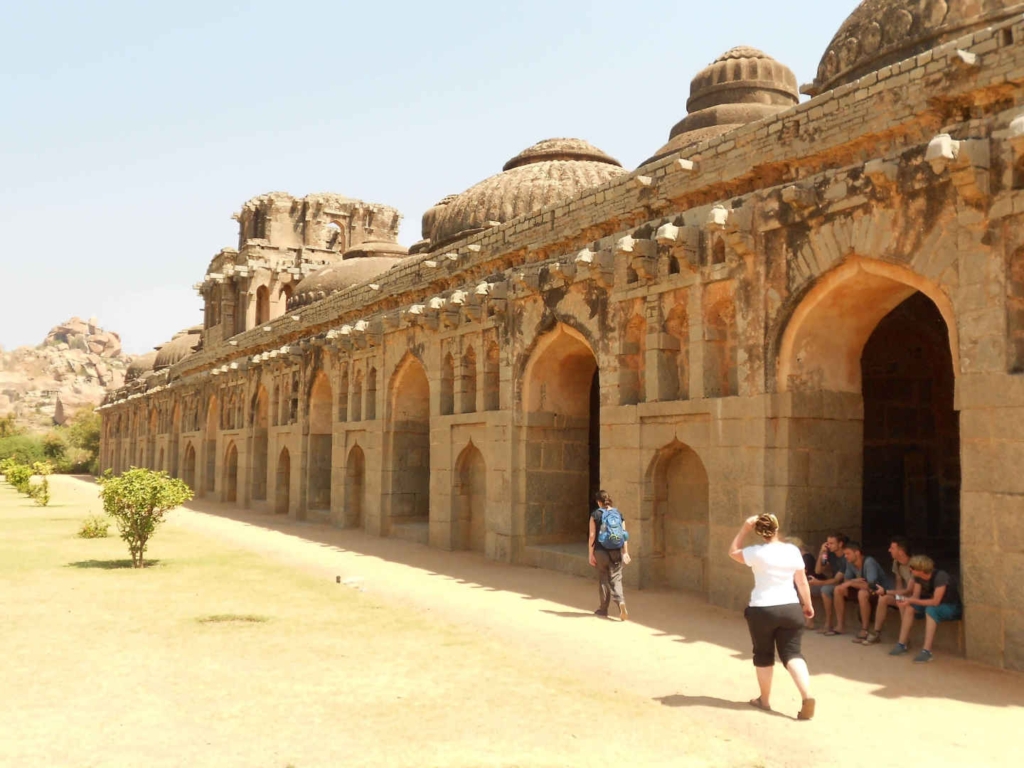
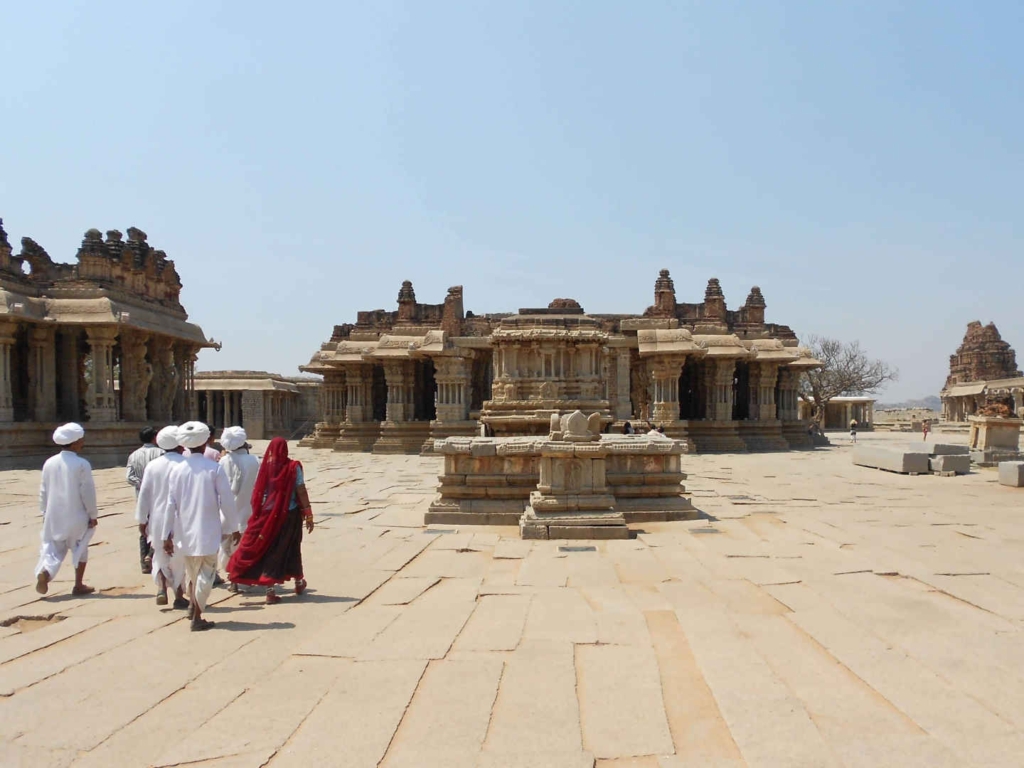
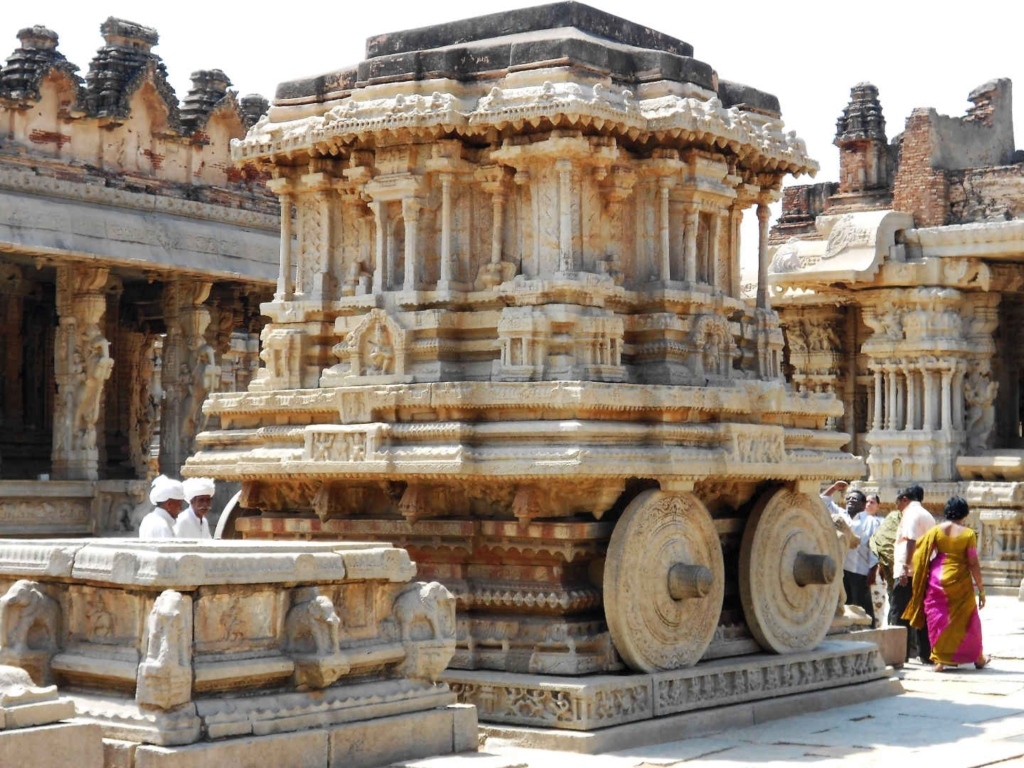
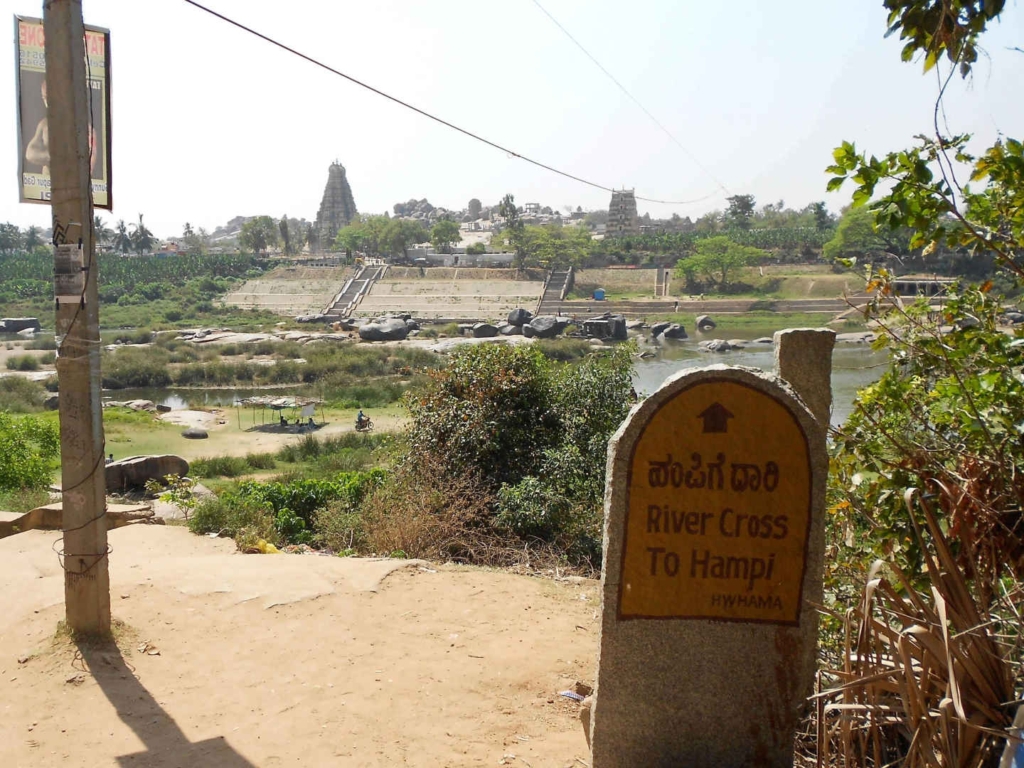

Your new friend looks just like thug! 😉 Mx
Haha – he does! x
I’m loving the commentary that accompanies the photographs! Especially, the women cast in stone. Your new friend doesn’t look like the the talkative type! Ha ha ha! x
________________________________
Love the elephant stables! Beautiful place all around!
I love this – how beautiful! and your comments are noted, you won’t be turned to stone! x
________________________________